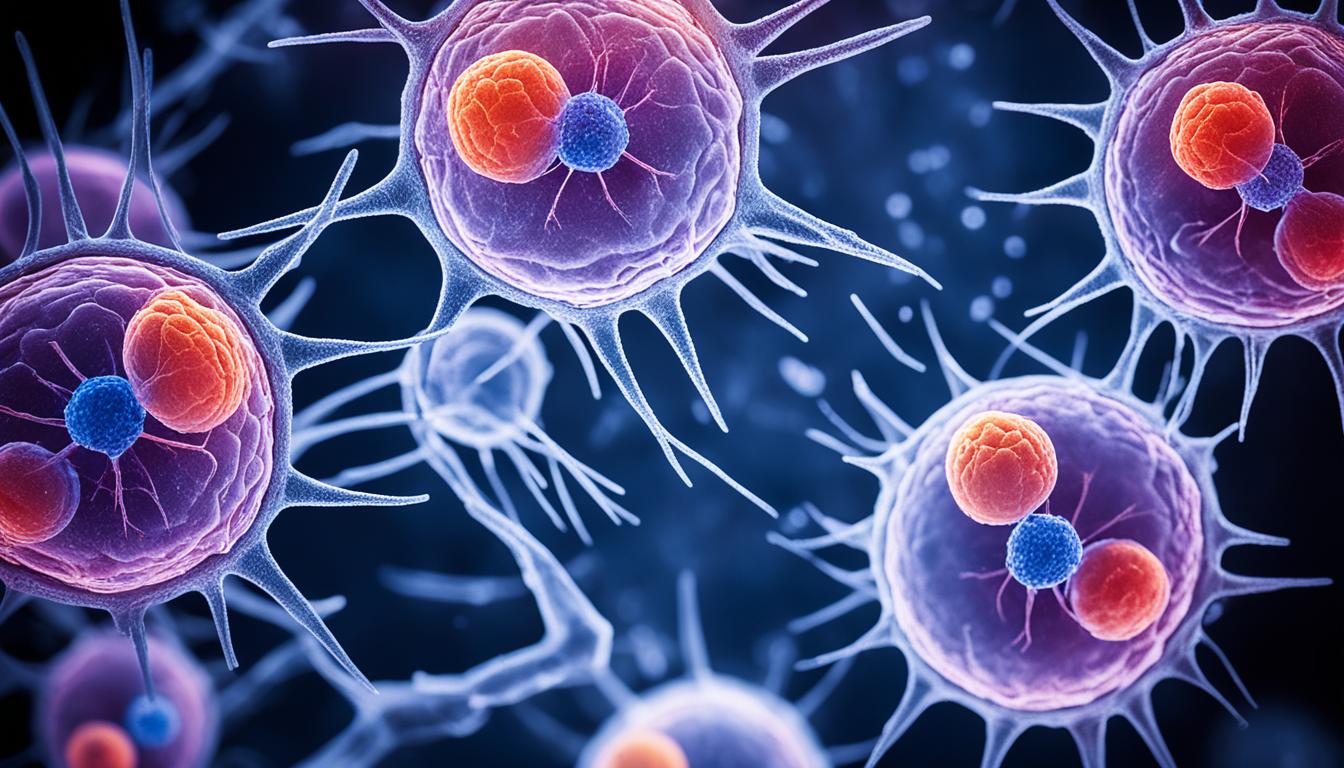Bowel incontinence, or fecal incontinence, makes people pass stool without meaning to. This condition is common, affecting between 7% to 15% of people worldwide. It’s caused by things like injuries from childbirth, surgeries, abnormalities in the body, and certain conditions that affect the nerves.
To diagnose bowel incontinence, doctors look at your medical past and do physical exams. They might also use tests like anorectal manometry and endoanal ultrasound. Treatment usually starts with changes in your life and what you eat. But for some, surgery or new treatments like stem cell therapy might be better.
Stem cell therapy uses cells from fat tissue to help repair and regrow damaged tissue. Studies have shown it can help people with bowel incontinence feel better and live a fuller life. This new therapy is exciting because it could be an option for those who don’t get better with usual treatments or can’t have surgery. We still need to learn more about how safe and how well it works for bowel incontinence over the long run.
Key Takeaways:
- Bowel incontinence is a condition characterized by the involuntary passage of feces.
- Obstetric injuries, anorectal surgeries, structural abnormalities, and neurological disorders can contribute to the development of bowel incontinence.
- Diagnosis involves a comprehensive evaluation, including medical history and various tests.
- Traditional treatment options include lifestyle modifications, dietary changes, medication, and surgery.
- Stem cell therapy shows promise in improving symptoms and quality of life for patients with bowel incontinence.
Symptoms and Causes of Bowel Incontinence
Bowel incontinence, also called fecal incontinence, is a tough issue that messes with life’s quality. It’s key to know the symptoms and causes to find the real problems and choose right treatments.
Symptoms of Bowel Incontinence
The symptoms differ in how bad they are and how they appear. Some leak a bit, others lose all control. The common signs are:
- Passive incontinence: Leaks happen without warning.
- Urge incontinence: Strong, sudden need to go but can’t make it in time.
- Faecal seepage: Small stool leaks happen, staining clothes.
These problems can make people feel ashamed, pull back from others, and lose confidence. If these symptoms sound familiar, getting medical help is important. This ensures you get the care and support needed.
Causes of Bowel Incontinence
Many things can cause bowel incontinence. These include:
- Obstetric injuries: Damage from childbirth can lead to loss of control.
- Anorectal surgeries: Some surgeries on the rectum or anus can also affect control.
- Structural abnormalities: Issues like rectal prolapse make it hard to control bowel movements.
- Neurological disorders: Nerve problems from diseases like multiple sclerosis affect control too.
- Aging: Over time, the body’s muscles and nerves for bowel control may weaken.
- Chronic constipation: Long constipation can weaken the rectum, leading to leaks.
- Diarrhea: This can irritate the rectum, reducing control over bowel movements.
- Medications: Some drugs, like laxatives, might also cause or contribute to incontinence.
Finding out the cause is crucial for a good treatment plan. Doctors will look at your medical history and do a physical exam to pinpoint what’s behind the issue.
Knowing the symptoms and causes helps when seeking medical help. Understanding this can open up different treatment paths to deal with the condition.
Diagnosis and Stem Cell Therapy for Bowel Incontinence
To diagnose bowel incontinence, a thorough evaluation is needed. Your doctor will look at your medical history, do a physical examination, and run tests. These tests might include anorectal manometry to check your anal sphincters and rectum, endoanal ultrasound to see your anal sphincter’s condition, and defecography to study your rectum and pelvic floor movement during bowel movements.
After the diagnosis, you and your doctor can discuss treatment. Common treatments involve changing your lifestyle, diet, taking medication, or having surgery. But, there’s also a treatment called stem cell therapy for those who don’t get better with usual treatments. In this therapy, mesenchymal stem cells from fat tissue are transplanted to help the damaged area heal.
Research has shown some good results with stem cell therapy for incontinence. It has helped improve symptoms and quality of life for many. Yet, more studies are necessary to make sure it’s both safe and effective. Stem cell therapy could change how we treat bowel incontinence, bringing new hope to those affected.

